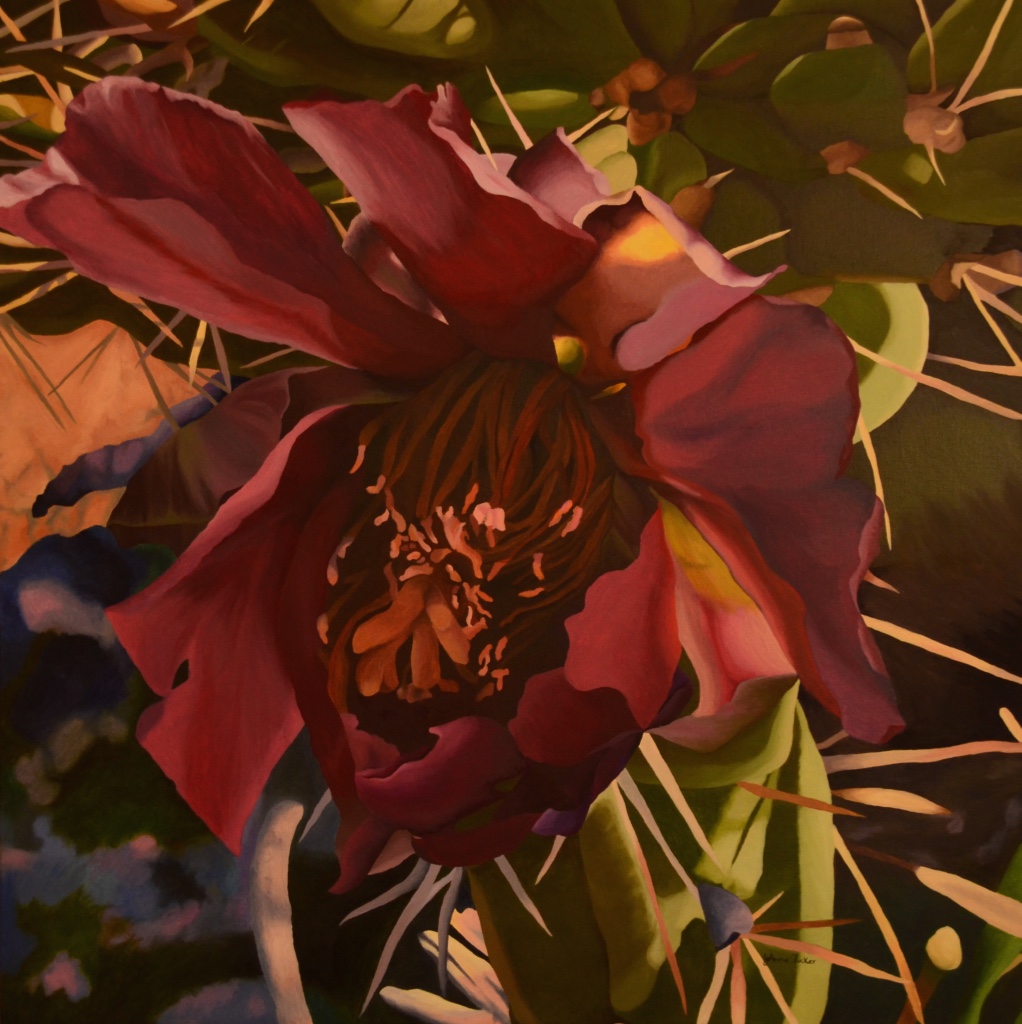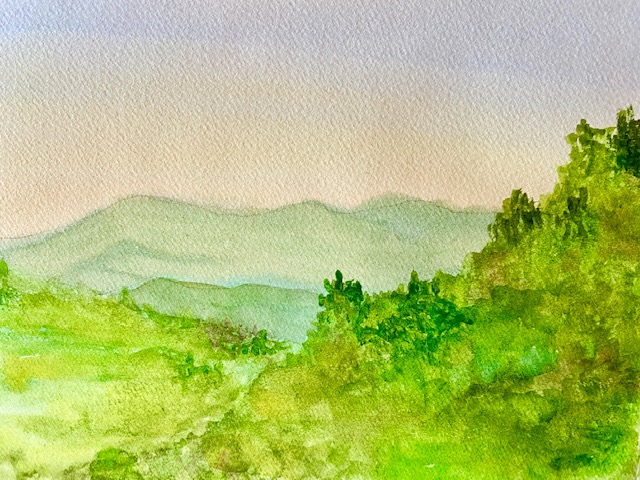In 2003 when my husband and I were thinking about moving from the New York area and I was becoming aware that I no longer had new goals for the dance company, I treated myself to classes at The Art Students League on 57thStreet. Later I’ll write more about my beginning studies in art. I knew it would be important to keep creative energy going in my life. Today I am excited to share how dance and art came together. Just a few weeks ago (on Saturday, January 12th), I led a movement workshop at the Community Art Gallery here in Santa Fe. It came about as a result of having a painting in the show “Exquisite Corpse.” The show was for the 10thanniversary of the gallery, and to be eligible to participate, you had to have been juried into one of their themed exhibitions.
A floral painting of mine had been in an earlier show so I emailed back the form saying I wanted to participate.

The program for the 10thanniversary show describes the intent and motivation:
Exquisite Corpse is an historic parlor game in which participants create one of three components of a figure drawing: head, torso and legs. 130 participating artists created one of those distinct sections. When assembled together, these sections will create an exhibit that unites the disparate parts into singular figures. Each artist’s section is priced individually at $150, and buyers have the opportunity to create their own combinations. ….. What better way to celebrate ten years of building innovative programming hand-in-hand with the community than to have a decade of artists together build a collective work of art.
When I got the return email in the spring, saying that I had gotten the body part of the “head,” I did a big sigh and was glad that I had all summer to work on it. The painting wouldn’t be due at the gallery until the beginning of October. Our instructions were that the piece had to measure 30” wide by 10” high. Well at least that gave me room to put things around the head! I am not good at portrait drawing even though I did do a 5-month program in Santa Fe with the outstanding teacher Anthony Ryder in 2009. In fact it was during those 5 months that Murray and I fell in love with Santa Fe and decided that we wanted to move here and make it our permanent year-round home.
OK… since I was good at flowers I would do a self-portrait surrounding my head with tulips. I had just returned from a spring trip to New York City and had been admiring all the beautiful displays of tulips, particularly in lower Manhattan near where the ferry from Jersey City arrived. Since I was staying in Jersey City and taking the ferry in daily I had lots of opportunity to wander through the display and take photographs.
Slowly over the summer I developed the oil painting, particularly challenged with the self-portrait and loving doing the tulips. I dropped it off at the gallery thinking, “Well at least I completed the assignment even if it wasn’t very good.” They had rescheduled the opening and Murray and I had reservations at Monument Valley, a place we had long wanted to visit, and so we missed the opening.

A week later, after returning from Monument Valley, I got an email from the gallery saying my painting had sold. Wow… I was totally surprised. Murray was busy in his office and I went bounding in asking if he wanted to go see the show and go to lunch afterwards. We agreed and I had an hour or so before we would leave. For fun I googled the phrase “Exquisite Corpse” and the most amazing dance interpretation consisting of 42 choreographers, most of whom I was familiar with, came up. (One of the choreographers was former Avodah dancer Sidra Bell.) Each choreographer creates a phrase of about 10 seconds and the next choreographer opens his/her phrase with the last movement of the previous choreographer’s work. The video on You Tube was great fun and extremely well made.
When I got to the gallery I was thrilled with how Rod Lambert, the Community Gallery Manager, had put together the show. He was the one who selected which heads would go with which torsos, and with which feet, and he had done an amazing job. I was thrilled with how my head was arranged with two other pieces.

the Exquisite Corpse show.
When I congratulated him on how well the show was displayed, he shared how well the opening had gone, with enthusiasm from both the artists and other attendees. He told us that more paintings were sold at the opening than for any other show. At some point I talked about the video I had seen where 42 choreographers did their version of Exquisite Corpse. Immediately Rod asked me about my background and whether I would be interested in doing a dance workshop related to the show. He always arranged various kinds of workshops around the show and it would be fun to do a dance one since they rarely if ever had done dance. There was a small honorarium for leading the workshop. Of course I said yes and over the next several weeks, via email, we selected a date and I sent in my bio and a brief description of the workshop.
The workshop ended up being quite wonderful. While it was small,with only five participants, each person was totally engaged and brought something special to the group. My friend Regina (a professional storyteller)was one of the participants and she had brought a friend of hers who was also a professional storyteller. Of course at one point in the workshop Regina and I just laughed remembering that we started doing such things together when we were about six years old in her living room. (That’s another blog sometime down the road.) One of the participants was totally deaf. She read lips very well and when she didn’t understand something we wrote on a large piece of paper we had placed on the wall. She had a lovely quality of movement. Two other women came in a few minutes late, one a writer and the other a therapist who had a dance background. They quickly became a part of the group.
We used some warm up improvisational work to lead to the centerpiece of each person creating their own solo. (Since it was a small group and each person was very capable I changed the original plan of small groups creating a dance and instead asked each person to create a solo. That would have been risky with most small groups but not with this one.) I asked them to select a head, a torso and feet from any of the works; the parts did not need to be from the same arrangement. By the way, some of the works were sculptures, like the torso in the piece I was a part of, while others were photographs or paintings in any medium. The choreographers were then to imagine how the head, torso and feet would move with at least 2 movement phrases for each part of the body.
While they were creating their pieces, I put a blanket of percussion instruments out, bringing the energy of my favorite accompanist Newman Taylor Baker into the room. When we gathered back together, each person shared their solo and I accompanied. Then after exploring the instruments, one person selected the instruments they wanted for their solo and another person in the group accompanied them. Each workshop participant also took us to the pieces that had inspired their movements.
The results were super. Before ending we linked the solos together as the 42 choreographers had done, and then we all watched the video I had seen, and which I highly recommend. Here again is the link to watch it.
I left feeling a sense of completeness. Dance and art together shared with five totally present and creative participants!
 Print This Post
Print This Post




















